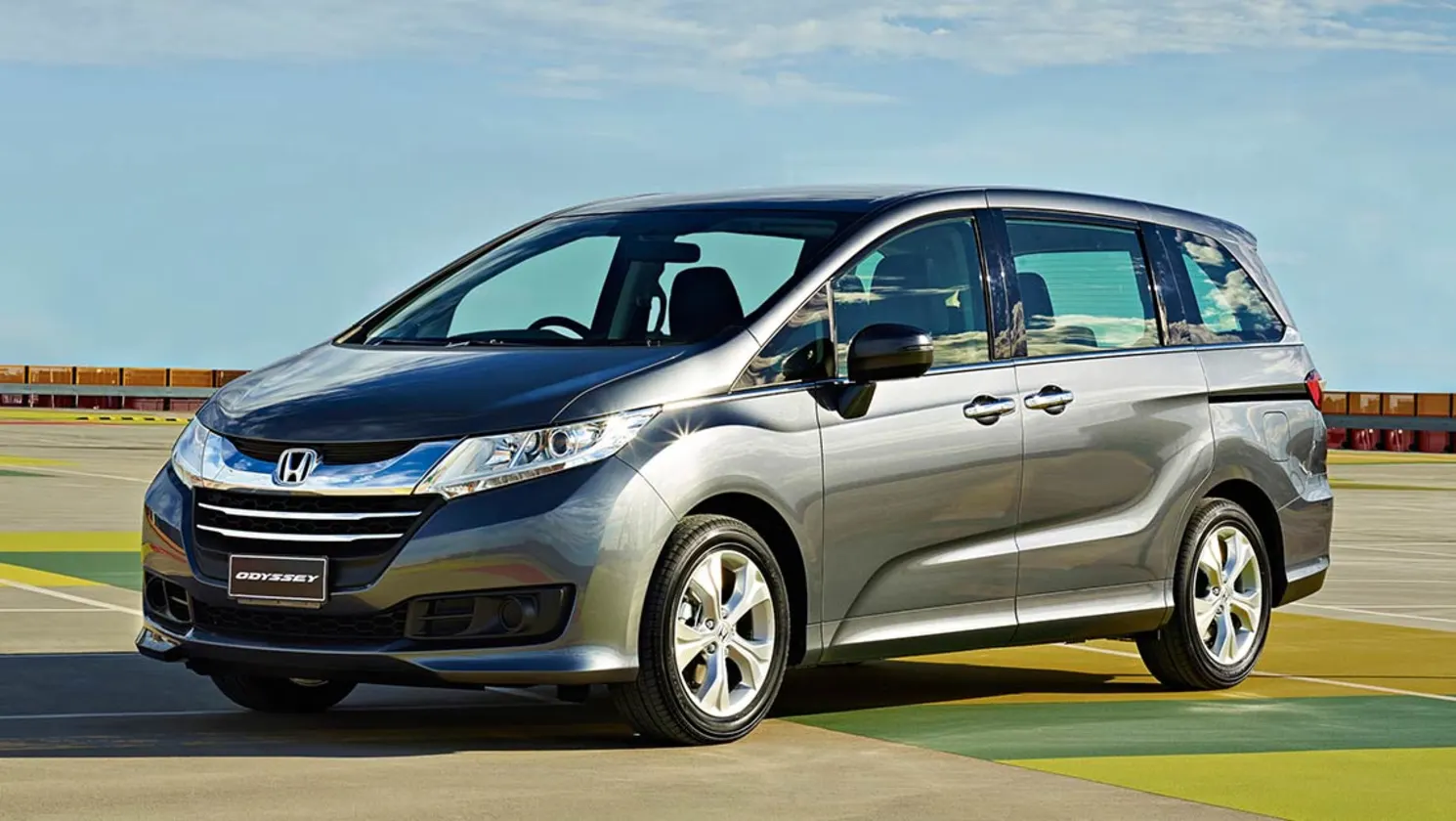The minivan remains the quintessential family vehicle. While the surge in SUV popularity has somewhat overshadowed it, the practicality and convenience a minivan offers for transporting families are still second to none.
Despite some hesitation from buyers who may see minivans as unfashionable, those who fully embrace minivan ownership often do so with strong enthusiasm and pride.
For anyone who prioritizes comfort and utility over sleek aesthetics, we salute you! Still, owning a minivan is just the beginning.
Given that your minivan will be responsible for carrying your most valuable passengers—your family—as well as all the gear that comes with them, it’s essential to select a model known for its reliability.
These vehicles have been identified as some of the longest-lasting on the road, based on an extensive analysis of 1.8 million cars to determine which models are most likely to reach 200,000 miles or more.
Each minivan was then given a reliability score. Below are the most reliable new and used minivans, starting with the best new models.
Kia Carnival
The Kia Carnival, with an average new car price of $39,100, is a relatively recent addition to the market, having been introduced for the 2022 model year.
As a result, it has not yet been rated for long-term reliability. Designed to shake up the minivan segment, the Carnival brings SUV-inspired exterior styling together with an upscale, refined interior.
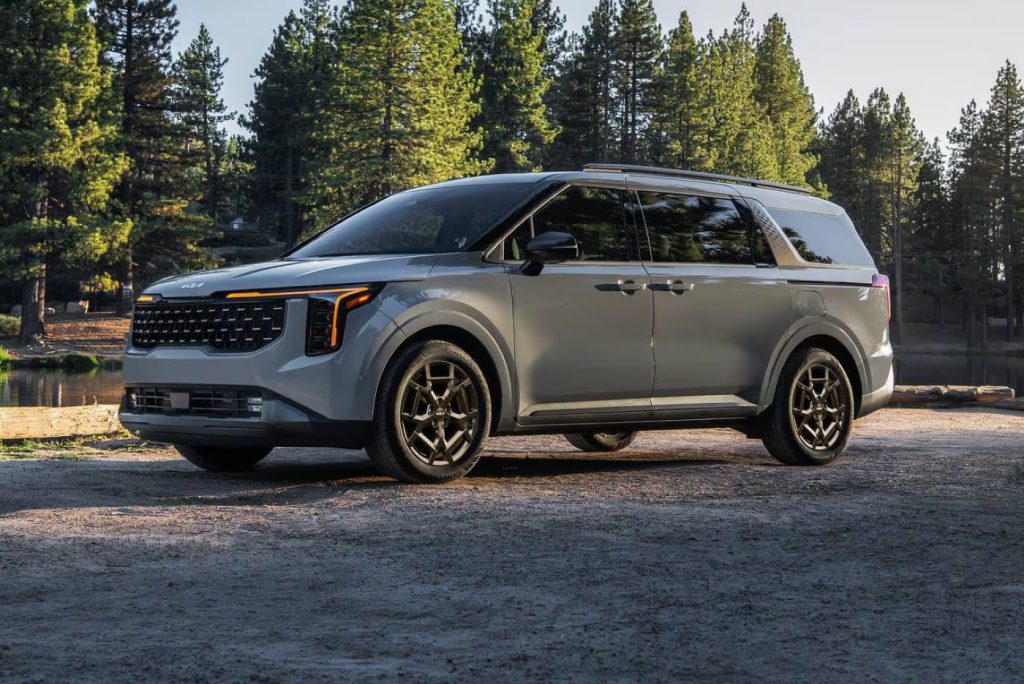
It’s packed with a wealth of family-oriented features, many of which are offered as standard even on the base LX trim. One of its standout attributes is its class-leading 40.2 cubic feet of cargo space located behind the third row of seats, offering excellent utility for families.
Combined with a powerful V6 engine, a robust suite of standard safety technologies, and a well-equipped infotainment system, the Carnival positions itself as one of the most compelling options currently available in the minivan segment.
Toyota Sienna
Coming in second is the Toyota Sienna, which also earned an score of 8.7. Its average new car price is $39,565, with a three-year-old used model averaging $38,915.
The Sienna was fully redesigned in 2021, bringing a more refined and upscale interior and exterior design. One of the most significant upgrades is the introduction of a hybrid powertrain that delivers an impressive 36 mpg combined—almost double the efficiency of its competitors.
The new system replaces the previous V6 engine with a four-cylinder hybrid and offers available all-wheel drive that still maintains strong fuel economy at 35 mpg in the city and 36 mpg on the highway.

The Sienna also comes well-equipped with infotainment features like Apple CarPlay, Android Auto, Amazon Alexa, and a Wi-Fi hotspot.
In terms of safety, it includes standard features such as blind spot monitoring, rear cross traffic alert, pedestrian detection, lane departure warning, automatic high beams, and road sign recognition.
For those seeking even more driver assistance, advanced options like hands-free park assist and a surround-view parking system are available.
Kia Sedona
The Kia Sedona holds the third spot in the rankings, earning a score of 8.1. While a new car price is not available, a three-year-old used model averages $32,025.
The Sedona is known for its upscale interior, featuring high-quality materials and offering three rows of seating that provide a high level of comfort for all passengers.
It also receives strong reviews for its smooth ride and responsive handling, making it a well-rounded family vehicle. Standard features include a 7-inch touchscreen infotainment system with Apple CarPlay, Android Auto, and Bluetooth connectivity.
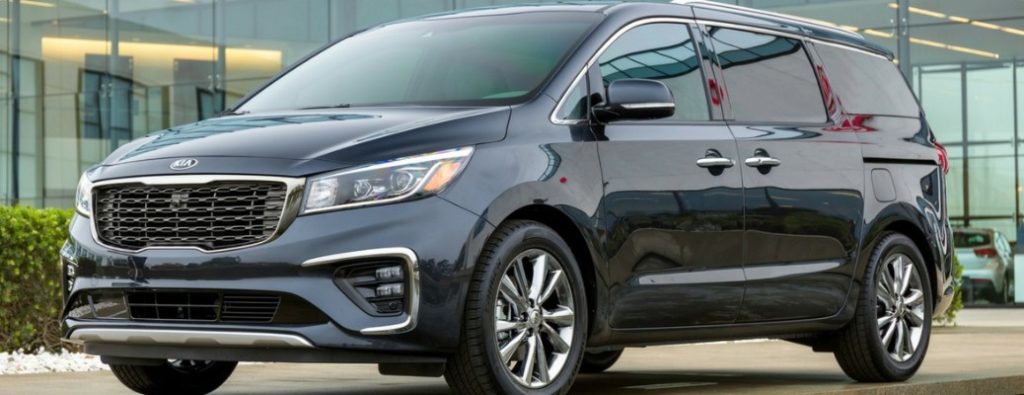
For those seeking more entertainment options, the Sedona offers an available rear-seat entertainment system with two 10.1-inch display screens to keep passengers in the back entertained. One of the Sedona’s standout attributes is its warranty coverage.
It comes with a five-year/60,000-mile basic warranty and a 10-year/100,000-mile powertrain warranty, which is considered the best in its class. Although the Kia Sedona was discontinued after the 2021 model year, it has been succeeded by the Kia Carnival.
Hyundai Staria
What exactly is going on in Hyundai’s design studio these days? The Ioniq 5 is undeniably striking, the Ioniq 6 ventures deep into the realm of the bizarre, and the Tucson currently holds the title for the most visually intriguing SUV on the market.
However, when it comes to boxy coolness, the standout isn’t any of those—it’s the Staria. That’s right, a minivan. But not just any minivan—it’s shaped with the sleekness of a Japanese bullet train, maintains the minimalist appeal of a vegan’s lunch, and carries a bold, Darth Vader-like presence.
Despite its futuristic appearance, the reality for European buyers is less exciting. The only Staria variants available in Europe are powered by diesel engines, and the model isn’t offered for sale in the UK.
This is the kind of people carrier that just about anyone would be happy to be seen in. Yes, even the most reluctant teenagers would pull themselves together and head to Grandma’s in this sleek, sharply styled vehicle that looks like it’s been plucked straight from the future. Enter Hyundai’s Staria—a people carrier with seating for up to 11.

The Staria would go up against established names like the Mercedes V-Class, Ford Transit Trail, and the ever-popular VW T6 and Multivan.
You could also throw in those Japanese imports being moved out of industrial estate showrooms—think Nissan Elgrand or Toyota Alphard. Actually, importing a Staria yourself wouldn’t be the worst idea.
Bigger than you’d expect. It’s built on an extended version of Hyundai/Kia’s N3 platform, the same architecture that underpins the Tucson, Sportage, and Sorento. At 5.2 metres long, it’s 250mm longer than the T7 Multivan and stands taller too.
This is a key consideration for van drivers in the UK—while the standard Staria stands at 1,990mm and can just about clear most local height barriers, the Camper (2,095mm) and high-roof Limousine (2,200mm) variants will have trouble.
That larger footprint translates to significant interior space. The people mover configuration comes in either nine seats (three rows of three) or seven seats (with four captain’s chairs up front and a bench in back). There are dual sliding doors for ease of access.
The Camper variant closely mimics VW’s California—it’s available as a full setup with seating and sleeping accommodations for four, or a stripped-down model that somehow crams in a fourth row to seat 11.
Still, it only sleeps four, so you’ll want to bring along tents. Luckily, there’s plenty of storage room beneath and behind the seats for them.
It’s a stunner, isn’t it? With its clean and confident front end, softened edges, bold grille, continuous light strip, and concealed headlights, the Staria’s design is a standout. The sides and rear aren’t far behind in execution either.
Ford Supervan
As for Ford, its long-running tradition of turning its practical Transit van into something absurdly powerful continues.
Previous iterations included a Mk1 version built around a GT40 and a Mk3 fitted with a Group C racing engine. T
he latest model in the series takes things even further—fully electric and cranking out 2,000 bhp, it’s the most potent Supervan to date. Just the thing to help your local postie set a new delivery record.
Fitted with the same 4.7-litre V8 engine found in the GT40 and stripped down to just the essentials, this iteration of the Transit demonstrated exactly what the platform was capable of when a group of dedicated enthusiasts had access to enough spare components.
Now, as the iconic nameplate nears its 60th anniversary, the original machine has been rediscovered—and is being brought back to life.
The restoration is being led by Andy Browne, a former Ford apprentice who first took ownership of what remained of the Supervan in 1973.
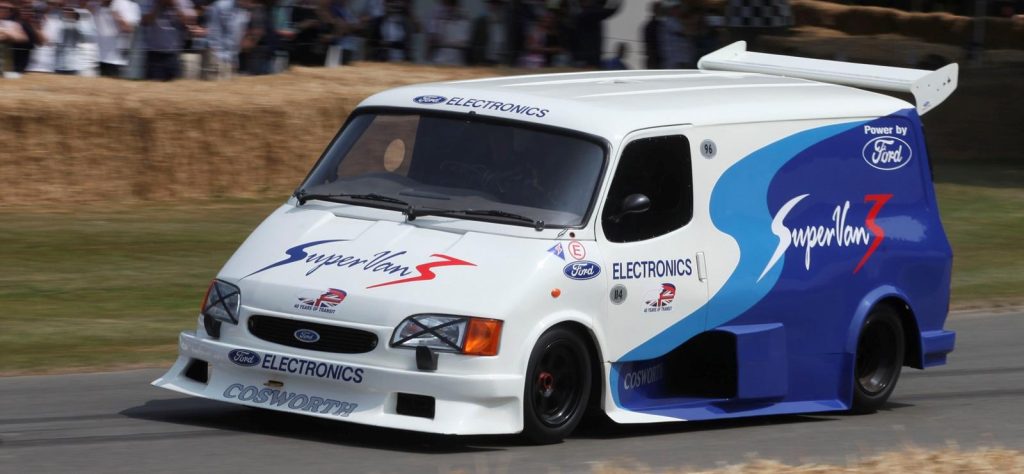
At that time, its initial builders, Terry Drury Racing, had completed its motorsport run, and Browne eventually had to part ways with it just a few years later. But fate had more in store.
“One day I got a call and somebody said to me they thought they knew where the remains of Supervan were,” said Browne.
“I’ve lost count, but this must have been at least the twentieth time, easily. I went to see these remains, ran my hand under the sills and knew that it was the van that I’d owned. It wasn’t even a van at all – just a floor pan and a bit of bulkhead, and some parts of a chassis that had been cut.”
Minivans That Do Not Last
Not every minivan delivers the level of comfort, technology, or reliability that families need. Some models fall short when it comes to safety features, fuel efficiency, or long-term ownership costs.
These are among the least popular minivan options on the market, often scoring low in overall value and failing to meet the expectations of today’s buyers.
Chrysler Pacifica
The Chrysler Pacifica, despite its versatility and reputation as the first hybrid minivan in the U.S., holds a D+ CarEdge Value Rating. With a manufacturer’s suggested retail price (MSRP) of $39,645, the Pacifica offers a strong mix of performance and technology.
It includes features like Stow ‘n Go seating and a towing capacity of up to 3,600 pounds. Families often appreciate its entertainment systems and safety offerings, which help make it a solid option for long road trips.
However, when it comes to value, the Pacifica ranks 165th overall, returns an average of 22 mpg combined, and has an estimated five-year cost to own of $60,241.
For 2025, Chrysler simplifies the Pacifica lineup, trimming it from five trim levels down to three: Select, Limited, and Pinnacle.
Among these, the Limited trim is exclusively available with a gasoline powertrain, while both the Select and Pinnacle trims offer a choice between a traditional gas engine or a hybrid setup.
The newly refreshed base Select model now comes equipped with several upgraded standard features, including a universal garage door opener, premium floor carpeting, an auto-dimming rearview mirror, and second-row windows with one-touch operation.
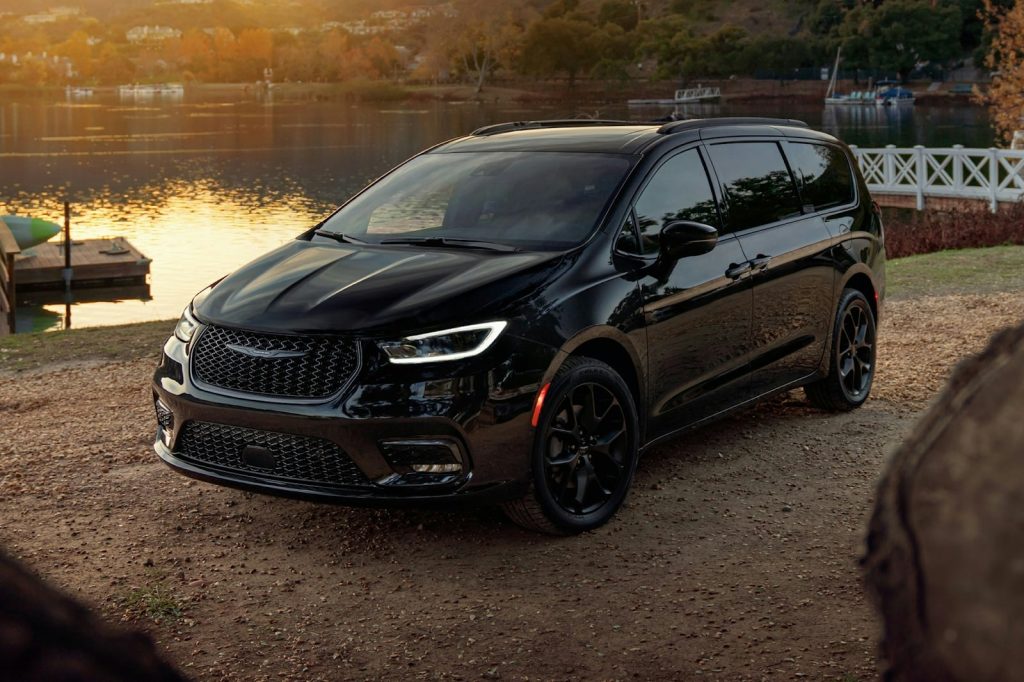
The S Appearance package—featuring dark-themed exterior accents, unique badges, distinctive wheels, and black upholstery with gray contrast stitching—now comes standard on the Limited trim and can also be added to the hybrid Select model via the Premium Group package.
That Premium Group also includes the Safety Sphere Group (with parking sensors, park assist, and a 360-degree camera system), the Uconnect Theater and Sound Group (which offers a rear-seat entertainment system), a wireless charging-enabled integrated center console, and a dual-pane panoramic sunroof.
The 2025 Chrysler Pacifica starts at a base price of $44,445, with the top trim reaching up to $61,780, depending on the chosen configuration and optional features.
Based on overall value and included features, the new Select trim represents the most appealing option for many buyers. Standard features include a heated steering wheel, synthetic leather seating surfaces, heated front seats, sunshades for the second-row passengers, and 17-inch alloy wheels.
While front-wheel drive is standard and perfectly adequate for most, buyers seeking more confidence in poor weather conditions might opt for the available all-wheel-drive system.
That said, sticking with the standard 3.6-liter V-6 gas engine is recommended, as long-term testing of the Pacifica Hybrid raised a few concerns related to reliability over a 40,000-mile evaluation period.
The gasoline-powered Pacifica is equipped with a 287-horsepower 3.6-liter V-6 engine mated to a nine-speed automatic transmission.
The hybrid variant produces 260 total horsepower through a combination of a 3.6-liter V-6 and two electric motors, powered by a 16.0-kWh lithium-ion battery pack. It’s important to note that all-wheel drive is not available on the hybrid models, which are strictly front-wheel drive.
While it’s not the fastest minivan in the segment, the front-wheel-drive Pacifica still performs admirably. It hits 60 mph in 7.3 seconds, placing it around the middle of the class in terms of speed, yet delivering a lively driving experience for everyday use.
In contrast, the Pacifica Hybrid takes an additional half-second to reach the same speed, due to its lower overall output compared to the gasoline-only variant.
Chrysler Voyager
Next is the Chrysler Voyager, which also received a D+ CarEdge Value Rating and has an MSRP of $37,935. Much like its sibling, the Voyager struggles in the value category, landing at 164th in overall value. It offers an average combined fuel economy of 22 mpg and carries a slightly lower five-year ownership cost estimate of $53,564.
Feeling squeezed by inflation? Chrysler is betting that the 2025 Voyager will be the budget-conscious family van that delivers the right balance of value and practicality. Although it carries a different name, the Voyager is essentially a more affordable version of the Pacifica minivan—which works in its favor.
It shares the same 287-hp 3.6-liter V-6 engine and nine-speed automatic transmission, offering similar performance and road manners that are virtually indistinguishable from the Pacifica’s.
That’s another big plus. Climb inside, and the cabin feels largely like the Pacifica as well, though noticeably stripped of some of the higher-end features. The second and third rows fold into underfloor storage bins, making it easy to create a flat load floor for hauling larger items.
Luxury touches like leather seats, built-in navigation, or massaging functions are absent, but the Voyager includes just enough essential features to keep a modern family comfortable, connected, and relaxed—without breaking the bank.
After a brief hiatus following its discontinuation in 2022, the Chrysler Voyager returns for the 2025 model year as the brand’s entry-level minivan.

It slots just below the lowest-priced Pacifica in Chrysler’s lineup and stands out with its pre-facelift exterior design. Chrysler has enhanced the Voyager’s value proposition by adding a range of standard features for its reintroduction.
These include adaptive cruise control, a 10.1-inch infotainment touchscreen, rear parking sensors, and blind-spot monitoring—bringing its equipment level in line with current expectations for family vehicles. The 2025 Chrysler Voyager is offered in a single trim level: the value-focused LX, starting at $41,990.
This trim provides three rows of seating and includes conveniences such as the aforementioned 10.1-inch touchscreen, adaptive cruise control, rear parking sensors, three-zone automatic climate control, second-row sunshades, and a power-adjustable driver’s seat with memory functions.
Under the hood, the Voyager mirrors the Pacifica’s mechanical setup. It comes equipped with the same 287-hp V-6 engine and nine-speed automatic transmission, driving the front wheels.
While the Voyager itself hasn’t yet been subjected to independent testing, extensive experience with the similarly engineered Pacifica gives a clear picture of what to expect. The engine delivers capable acceleration, the transmission operates with refined smoothness, and the ride quality remains agreeable over varied road surfaces.
While no one would confuse its handling with that of a sports car, the Voyager exhibits a level of composure and predictability in corners that makes for stress-free family driving.
It’s worth noting that the Voyager does not offer a hybrid powertrain—those looking for electrification will need to look to the Pacifica’s plug-in hybrid variant.
Dodge Grand Caravan
The Dodge Grand Caravan, another aging entry in the segment. It ranks 150th overall in value and has an estimated five-year cost to own of $48,403.
While it may be more affordable than some newer rivals, it lacks the updated features and refinement expected in today’s minivan market.
Rumors of the Dodge Grand Caravan’s demise have proven premature, as the aging minivan remains available for the 2020 model year.
It continues to be the most affordable way to purchase a new minivan, but potential buyers should take a moment to consider whether its dated platform meets their current needs.
The Grand Caravan is a relic from a previous decade and completely lacks modern driver-assistance features that are now standard in its newer rivals. Its infotainment system is similarly outdated, both in terms of usability and hardware.
What the Grand Caravan does offer, however, is a practical, work-ready interior that includes standard Stow ‘n Go second-row seating, a tough (albeit plastic-heavy) cabin, and a price that undercuts nearly every competitor in the segment.
For 2020, changes to the Grand Caravan are minimal. The midrange SE Plus trim now includes second-row captain’s chairs, an eight-way power-adjustable driver’s seat, and red contrast stitching on its black upholstery.

Additionally, the Blacktop Appearance package—featuring blacked-out styling elements—is newly optional for both the SE Plus and SXT models. Apart from these minor tweaks, the Grand Caravan remains essentially unchanged. Dodge has confirmed that this will be the final model year for the van.
Pricing for the 2020 Dodge Grand Caravan starts at $29,025 for the base SE trim, climbs to $31,825 for the SE Plus, and tops out at $34,490 for the SXT. Given that most buyers interested in this model are likely shopping on a tight budget, the SE Plus represents the most sensible choice.
It adds a few creature comforts such as automatic headlights, Bluetooth connectivity, and the trademark second-row Stow ‘n Go seats while still maintaining a relatively low price.
However, those seeking more advanced technology, driver-assistance systems, or upscale comfort may find better value in higher-end rivals like the Chrysler Pacifica or Honda Odyssey, even if it means spending more upfront.
All Grand Caravan trims share the same powertrain: a naturally aspirated 3.6-liter V-6 engine producing 283 horsepower, paired with a six-speed automatic transmission. While this setup prioritizes simplicity and familiarity, performance is underwhelming.
The engine emits a surprisingly deep growl when accelerating hard, but it delivers the slowest 0–60 mph time among recently tested minivans. Nonetheless, the engine’s output is adequate for most day-to-day tasks. The six-speed automatic shifts smoothly in general driving but is slow to downshift during passing.
Ride quality is mostly comfortable, though larger road imperfections can jolt the chassis. Despite its tall profile, the Grand Caravan handles corners with more composure than expected and feels stable at cruising speeds.
Fuel economy is one area where the Grand Caravan clearly shows its age. Its EPA estimate of 25 mpg on the highway falls short of more modern minivans.
In real-world testing over a 200-mile stretch at a consistent 75 mph, the Grand Caravan managed just 22 mpg—underperforming its official rating.
By contrast, competitors like the Chrysler Pacifica, Honda Odyssey, and Toyota Sienna all exceeded their EPA estimates by at least 2 mpg during the same test.
This underperformance highlights the Grand Caravan’s inefficiency and reinforces its position as a budget-friendly option best suited for buyers who prioritize price above all else.
Ford Transit Connect
The Ford Transit Connect, while technically a compact cargo van, is sometimes considered by budget-conscious buyers seeking minivan alternatives. It holds a C+ CarEdge Value Rating and ranks 135th in overall value.
The Transit Connect is designed primarily for small business use, offering a fuel-efficient engine, customizable configurations, and generous cargo space. With available features like Ford Co-Pilot360, it appeals to urban businesses in need of a practical and maneuverable vehicle. Its estimated five-year cost to own is $49,202.
The Ford Transit Connect may not spark the imagination of driving enthusiasts, but it stands out as a smart choice for those seeking a compact, versatile transit solution.
Designed to cater to a wide range of needs, its cargo-van configuration proves especially useful for tradespeople and craftspeople, while also appealing to van-life adventurers.
In its passenger-van setup, the Transit Connect can accommodate up to seven occupants, and with the right equipment, either version can tow up to 2000 pounds. However, it’s not without its drawbacks.
The van’s fuel economy lags behind class leaders, the base engine lacks vigor, and although it’s easy to maneuver in tight spaces, the suspension results in a choppy ride. Still, despite these imperfections, the Transit Connect remains a highly functional and dependable work vehicle.
For its final model year in 2023, the Transit Connect carries over without any major changes. One notable difference, however, is its significantly higher price tag, with the base model’s MSRP jumping from under $27,000 in 2022 to over $34,000. This marks the end of the road for the Transit Connect in the U.S. market.
Its competitors are also vanishing—Ram ceased production of the ProMaster City after 2022, and the Mercedes-Benz Metris is set to be discontinued after this model year. The compact city van segment is fading away.

The 2023 Ford Transit Connect is priced between $35,995 and $41,695, depending on the chosen trim and options. Available models include two versions of the XL, two XLT trims, and the range-topping Titanium. What makes the Transit Connect especially appealing is its flexibility; it can be configured to meet a wide range of requirements.
Among the trims, the XLT stands out as the most balanced option. It comes standard with a touchscreen infotainment system that includes Apple CarPlay and Android Auto, built-in navigation, and a Wi-Fi hotspot. Additionally, all XLT models are equipped with blind-spot monitoring and rear cross-traffic alert.
To enhance safety and convenience, we recommend opting for features such as adaptive cruise control, front and rear parking sensors, lane-keeping assist, and passive keyless entry. Adding the Trailer Tow package is also advisable, as it enables the van’s full 2000-pound towing capability.
Under the hood, the Transit Connect is powered by a turbocharged 2.0-liter four-cylinder engine that produces 162 horsepower, mated to an eight-speed automatic transmission. It supports a maximum towing capacity of 2000 pounds and can carry a payload of up to 1570 pounds.
Our last test of the long-wheelbase model, which featured the now-discontinued 2.5-liter four-cylinder, revealed that the van handled city driving with ease.
Its steering was precise and its body control commendable. However, the ride quality suffered on uneven surfaces, and highway tracking could be inconsistent.
Honda Odyssey
Lastly, the Honda Odyssey, which is better regarded than most in this group, received a B+ CarEdge Value Rating. Priced at an MSRP of $38,240, it is a family-focused minivan with seating for up to eight passengers.
The Odyssey features a spacious and well-equipped cabin, complete with a rear-seat camera and entertainment system.
Powered by a smooth V6 engine, it delivers a comfortable ride that makes it ideal for long-distance travel. However, it still only ranks 78th in overall value, with an average combined fuel economy of 22 mpg and an estimated five-year cost to own of $50,458.
Honda may not have invented the minivan, but it quickly perfected the concept with the Odyssey. Now well into its third decade of production, the Odyssey has built a reputation for dependable, worry-free transportation for up to eight passengers and all their belongings.
Its proven 3.5-liter V-6 engine, paired with a 10-speed automatic transmission, offers reliable performance and competitive fuel efficiency. The Odyssey also stands out for its impressive—especially for a minivan—ride and handling characteristics, giving drivers a reassuring sense of solid engineering and build quality.
While the interior may not feel as upscale as the latest Toyota Sienna, Chrysler Pacifica, or Kia Carnival, the 2025 Odyssey makes up for it with notable tech upgrades.
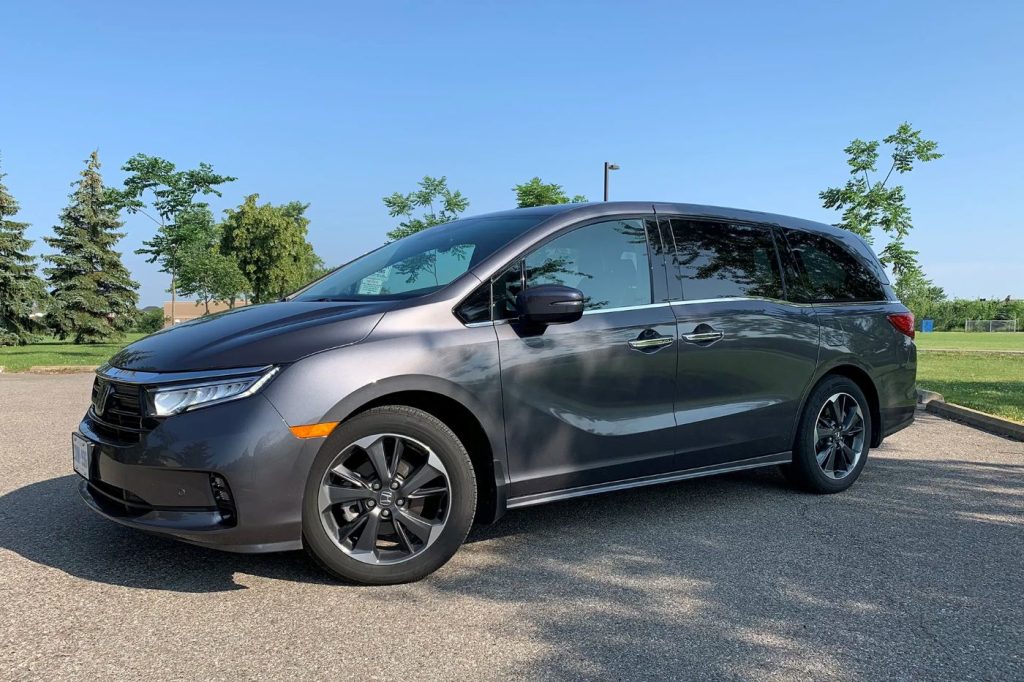
Every model now comes standard with a rear-seat entertainment system, along with a cabin camera and PA system that allows front-seat occupants to easily communicate—or lay down the law—with passengers in the back.
Honda’s unique Magic Slide second-row seating system also helps keep the peace during long family road trips by offering flexible seat positioning, though the seats don’t fold flat into the floor—unlike the third row, which does.
Overall, the Odyssey continues to be one of the top minivans in its class and earns a place on the 2025 Editors’ Choice list.
In the current minivan rankings, the Honda Odyssey lands at #5. Above it are the Volkswagen ID.Buzz, Toyota Sienna, Kia Carnival Hybrid, and Kia Carnival, while the Chrysler Pacifica trails just behind. The Odyssey’s starting price for 2025 is $43,670, with the range topping out at $52,630 depending on the trim and options selected.
For the 2025 model year, the Odyssey sees a number of updates. The front and rear ends have been refreshed with a new grille, larger blacked-out foglamp surrounds, and a redesigned rear bumper.
In a subtle nod to Honda’s performance heritage, the vertical reflectors in the rear bumper have been borrowed from the now-discontinued Acura NSX supercar.
New wheel designs are available across all trims, with the top-tier Elite receiving 19-inch wheels. Two new exterior paint options, Solar Silver Metallic and Smoke Blue Pearl, add some fresh visual appeal.
Inside, the Odyssey benefits from tech enhancements including a new standard 7-inch digital instrument display, a 9-inch infotainment touchscreen, and a redesigned, larger 12.8-inch screen for rear-seat entertainment.
Pricing for the 2025 Odyssey starts at $43,670 for the EX-L trim and tops out at $52,630 for the fully loaded Elite. The previously available base EX trim has been discontinued, streamlining the lineup to four models.
The EX-L remains the best value, offering a comprehensive feature set that includes heated leather seats, wireless charging, and a power-operated rear liftgate—everything most families need without unnecessary extras.
For those wanting a more aggressive aesthetic, the Sport-L trim (formerly just Sport) adds visual flair with black 19-inch wheels and gloss-black accents on the grille, headlamps, mirrors, taillamps, and more.
Under the hood, the Odyssey is powered by Honda’s familiar 3.5-liter V-6 engine, producing 280 horsepower and 262 lb-ft of torque.
While these figures may seem modest for a vehicle weighing over 4,500 pounds, the 10-speed automatic transmission has been tuned for responsive, efficient performance. The result is a minivan that feels agile, refined, and more fun to drive than its segment suggests.
Although steering feedback could be more pronounced—a common gripe across modern family vehicles—the Odyssey’s light but precise steering still makes for a pleasant driving experience.
In testing, all Odyssey trims offered a comfortable ride, though the EX-L’s 18-inch wheels provided better isolation from rough roads compared to the larger 19-inch wheels found on the Elite.

